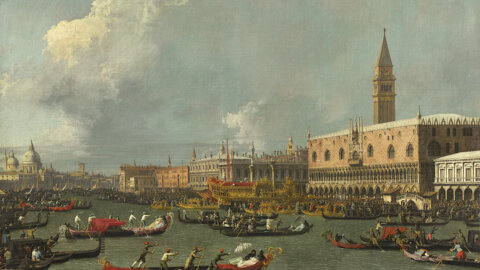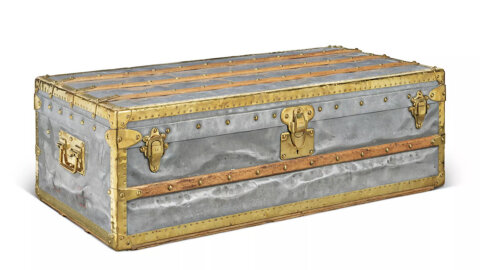In the many professions of the publishing industry are still women to excel. Undoubtedly the twentieth century has been the age of women writers and readers. Even in Italy among the authors of popular success already from the first decades of the twentieth century are not only men, but there was also a large patrol of writers who knew how to feed, enrich and sometimes inflame the imagination of readers and reader. And in some cases with editorial shuffs that come directly to the present day, or little we miss.
One of these was Carolina Invernizio, a storyteller of the late nineteenth century-early twentieth century, on which he weighed for a long time, and perhaps decisively, the judgement that gave Gramsci in his notebooks of the prison: “The honest hen of our literature Popular. ” To see the judgement there could also be, and the proof is that still today is reported unanimously.
The same Umberto Eco, who studied and appreciated certain forms of popular culture, was not tender with the writer writing:
It was very popular, in the nineteenth century, Carolina Invernizio, which has made dream generations of proletarians with stories that were titled The Kiss of a dead, revenge of a mad or the corpse prosecutor. Carolina Invernizio wrote terrible and someone remarked that he had the courage, or weakness, to introduce in the literature the language of the small bureaucracy of the young Italian state (to which belonged her husband, director of a bakery Military.)
They are perhaps judging by a brush, as long as we have the courage to extend it to the present day, albeit with different terms, to many of the narrators that go for the major, both in the library and in the screens, since they have no literary merit much higher than the His. But this is another discourse, which would lead us far.
An extraordinary creativity
Carolina Invernizio was a woman of bourgeois origin, with a linear existence, marked by the stages typical of her social condition: her studies as a teacher, her betrothal, her marriage, her beloved daughter, a normal family with her rituals and her Habits. A life maybe even flat, without ever a sharp or a blow of the wing.
But perhaps it was the ideal humus, and we would say almost indispensable, because it could blossom and take its own creativity, which was concretized in more than 120 novels, all kissed, who more or less, from an excellent reception of the public.
His books followed regularly one after the other, almost as if they were the beads of a rosary, with the colorful covers and the extremely suggestive titles, which pushed the readers to run in the bookcase. Precisely the covers and titles, chosen with great attention by the writer and his editor Salani who came to create a specific necklace for his novels, constitute a primary ingrediemte of his success. Just slide the first editions of the Kiss of a dead, the Buried alive, the Revenge of a mad, the murder of the Countess, the Hand of the dead, the daughter of the murderer, the orphan of Collegno, the children of Sin, to name a few, to understand the importance Of these choices in the early twentieth century Italietta.
Even the cinema “draws” to her
The novels were never taken into account by the great literary criticism, with some exceptions, like that of Gramsci, but have constituted for decades the privileged readings of so much public, especially feminine. And this happened despite the anathemas of good society, which strongly advised against the reading of the maidens, or the mass at the index of the church, which considered sinful those readings.
Some novels were then transposed into cinematographic works, since the time of the mute, and then, up to the present day, they constituted matter and background for films and television screenplays, which did not fail to gather consensus and applause. We remember in this regard the film The Kiss, derived from his kiss of a dead, released in 1974 for the screenplay by Pupi Avati; Or the television show in five episodes, a popular Italian novel, created by Ugo Gregoretti, whose third episode, aired in December of 1975, was inspired by a novel and played by Luigi Proietti. Or, finally, the series of the Velata dame, transmitted by RAI Uno in 2015, further proving that his stories were not really to throw away.
life
La Invernizio was born in Voghera in 1851, in a quiet middle-class family. The father is a state official and in 1865, when Carolina is 14 years old, he moved to Florence after moving the capital from Turin. Here the girl studies and graduates as a teacher, as the three sisters and as many daughters of her social class. At the right age he is engaged with an army officer and in 1881, perhaps a little late with the times, he marries. And after five years, the only daughter, Marcella. A life, as you can see, in which the stages follow each other regularly, in a manner identical to those of the good “ladies” of the country.
But in his head there is no lack of the black soul, despite the bourgeois appearance always and impeccably exhibited: a transgressive and disruptive soul, rigidly held tightly to the brakes. He is exemplary wife, mother tender, very devoted to Our Lady, to whose shrine of the Consolata in Turin she goes with her daughter every Saturday. On Mondays he receives friends and acquaintances in his living room and in some cases also intellectuals of passage: the small social obligations and citizens, including the first to the theatre. No transgression, never a chat about her. Only Vezzo, if one can define it, that of having postponed the date of birth of 7 years, discovered only in recent times with an investigation to the registry office. For the rest nothing to say.
Youth onset
She started writing as a young girl, when she attended the school, so much so that a story threatens to have her expelled from school for the scabrous content. But the real debut was in 1877, when he presented himself by the publisher Salani of Florence, with a factory not far from where he lives, and proposes his first novel, Rina or the angel of the Alps. The great popular Florentine publisher is immediately struck by the unexpected proposal to publish a book of female author, a rare event in the world of letters of the time, and the grace of the young, from the notebooks in which the novel is written with beautiful handwriting.
It reads it and decides to publish it immediately, who says paying it 5 napoleons of gold, that is to say five coins of 20 lire each, who without any compensation, who for a remuneration that the twenty-six Carolina, which however declares 19, never wanted to accept. The bet is immediately successful, the book goes to steal, the reprints follow one another, the circulation is impen, seems to reach 150,000 copies only in the first years. Considering that heart and Pinocchio are there to come, the novel is an unparalleled success in our asfittic editorial panorama, rich in books, but scarce of readers. Then like today.
A break
It would seem at this point the time to beat the iron until it is hot, to continue that is with the successive works, with the first to be tread. But here Carolina stops, you take a break; Perhaps the marriage is incumbent upon the preparations, the new dwelling, a family life to be set up and channelling into the right tracks from the very beginning.
He resumed writing only about ten years later, in the mid-eighties, at the time of the birth of his daughter, which occurred in 1886. But by this time there will be no more stops. The return to the books is with what will become his most successful: The Kiss of a dead, a work that will be reprinted countless times and that will be re-proposed, as we have seen, even in various film and television remakes.
A huge production
Carolina thus relinks the relations with the Salani, among other things now lives in front of the publishing house, in the avenue of the Mille in Florence, and begins a collaboration, which will last thirty years, until the death of her in 1916, even if the real official contract That the league exclusively to the Publisher will be signed only in 1907.
But this is an unimportant detail, in a continuous and never interrupted relationship, with a regular production of three or four books a year, but in some cases expanded to seven in 1892, to eight in 1912 and back to seven in 1915: novels that sometimes were already app To be in the appendix to the newspapers “the national opinion” of Florence and “La Gazzetta di Torino”.
Success is repeated from now on with each title. And at this point is remunerates regularly: 600 lire per volume. It is not so much, for the sales that assures, but it is not even little: Emilio Salgari in that period takes little more than half, 350 lire per title. But to you, a lady of Good society, the sum is enough: there is the salary of the husband, officer of the Bersaglieri, to make ends meet the family budget. And anyway writing over three the year of media does not go to earn more than the consort? At Christmas then the publisher gives her a gift of a beautiful jewel.
In short, it’s okay, does not try to move to other publishers, or to pay a percentage, which would guarantee stratospheric gains. It is considered fulfilled and does not think of changing anything. Imagine then going to treat pignolescamente the rewards with the publisher! Different and much more dramatic is the case of Salgari, with a large family and a wife in need of continuous care, to which money is never enough, which will lead to suicide.
I Why of Success
Why so successful? Probably because its simple and elementary prose is easily accessible to all, even to the most humble classes. But they also like the taller ones. It is well known that Giolitti himself, during the summer holidays in Bardonecchia, never fails to carry a book of his. And every month a ship sails from the port of Livorno for America crammed with its volumes, which sometimes remain the only link of the emigrants of Buenos Aires or Long Island with the mother country.
Those elements that have made the fortune of the appendix novel and that you can skillfully play, crime, guilt, sin, betrayal, hatred and love, sometimes veed by atmospheres to the limit of the illicit and eroticism, manage to exert a fascination Irresistible. Just as the eternal struggle between good and evil, between vice and virtue, between angelic and diabolical creatures, between depraved seducers and naïve maidens corresponds to the expectations of the public, it stimulates their interest, their curiosity. And in this way the reader identifies himself with the story narrated.
The writer is often inspired by events, the most inextricable episodes of crime; His imagination reprocesses them and brings them to a conclusion. To make his stories credible, he tries to really represent the places, streets and alleys where the crimes are held. It uses road guides, when it can not go there in person, so as to appear credible and well adherent to reality, as Salgari does with exotic places by helping with atlases and encyclopedias.
He died of pneumonia in 1916, at the age of 65 years. In the Testament he expressly requested that his burial be postponed for a few days, to avoid the fate of buried alive which he had so cleverly described in the novel.




